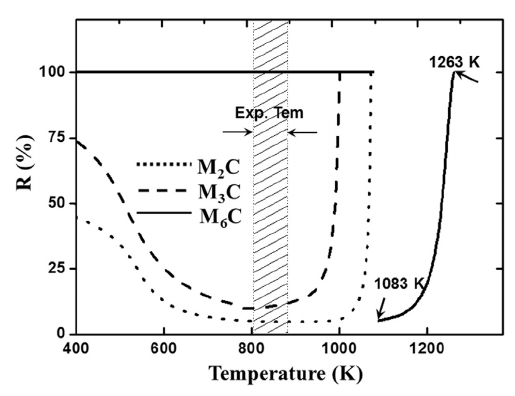

A hybrid method combining first-principles calculations and Weiss molecular field theory with thermodynamic data has been implemented to explore the origin of magnetic-field-induced precipitation behaviours for alloy carbides. The paramagnetic Mo atom disturbed the order of magnetic moment and resulted in a decrease in the Curie temperature for alloy carbide Fe6-xMoxC. The temperature dependence of magnetic moment and saturation magnetization of Fe atoms at different Wyckoff positions, as well as the saturation or induced magnetization of Fe6-xMoxC, decreased with increasing temperature. The higher Fe content and external magnetic field greatly increased the magnetization of alloy carbides. Two kinds of stella quadrangula lattices were employed to account for the total magnetism which was derived from the contribution of different Wyckoff sites of Fe atoms and Fe-C distances. The calculated total free energy taking into account magnetic field, temperature and composition was sufficient to provide quantitative agreement with experiment. The investigation of the effects of external field on the carbide precipitation behaviours led to a better understanding of the magnetic-field-induced phase transformation mechanism in heat resistant steels.
Acta Materialia, Vol 102, 2016, p24-31.

Phase quantification in nanobainite via magnetic measurments and X-ray diffraction
| PT Group Home | Materials Algorithms |